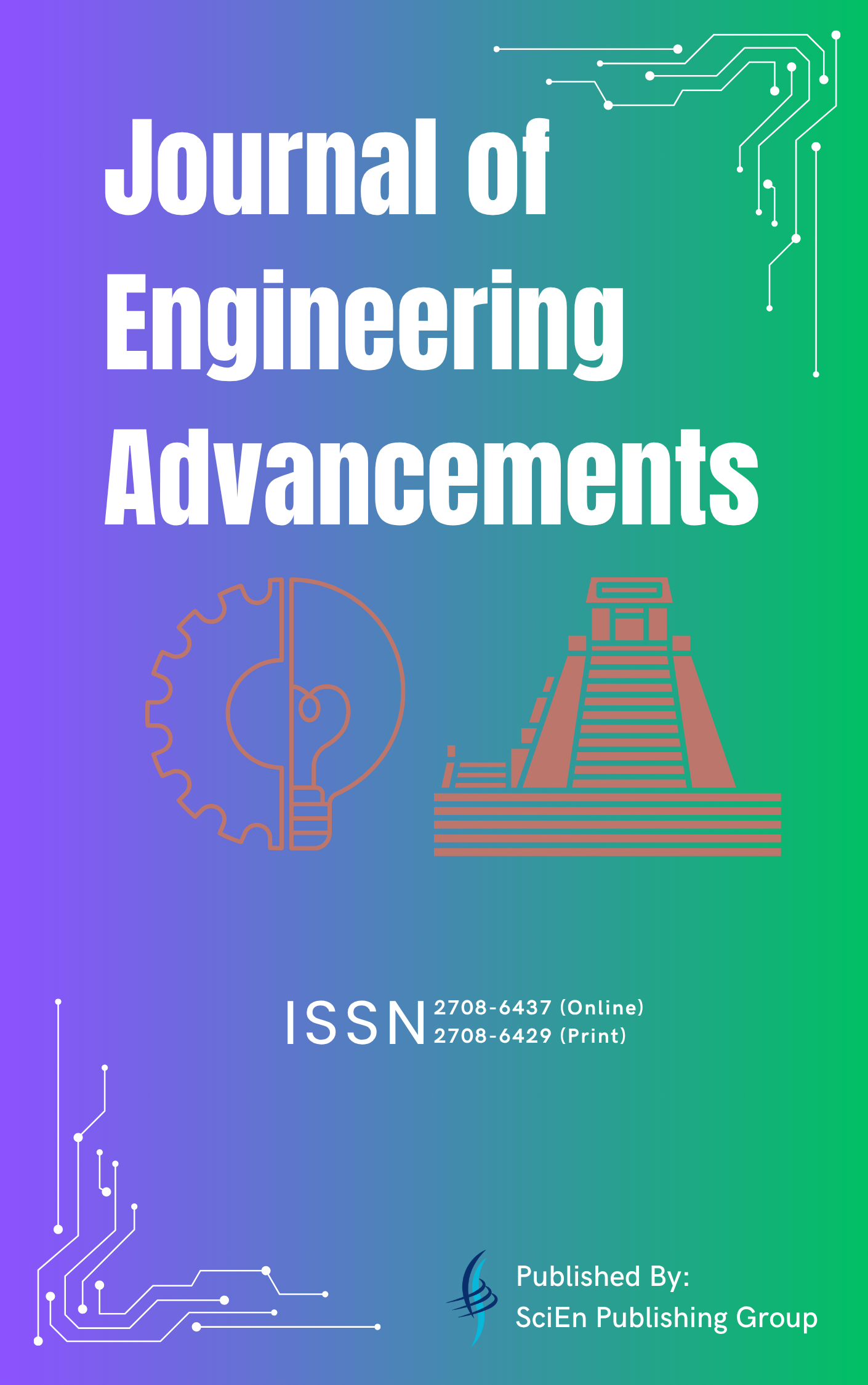Numerical study of Fluid Flow and Heat Transfer Characteristics due to Air Jet Impingement in Food Cooling Process
DOI:
https://doi.org/10.38032/scse.2025.1.11Keywords:
Jet Impingement Heat Transfer, Cooling, Nusselt Number, Food, CFDAbstract
When the temperature of the impinging fluid differs from that of the impingement surface, impingement cooling is extensively used to achieve high heat transfer rates. The surface heat transfer coefficient in impact cooling depends on several impact parameters, namely the design of the nozzle, the geometry of the object to be cooled, the exit distance of the beam from the object body, jet speed, and jet limit. Jet impingement is frequently used in a number of industrial settings to achieve high local heat transfer coefficients. This present work is about the air impingement cooling of hemispherical foodstuff, and it was done using ANSYS Fluent and computational fluid dynamics (CFD). As a Turbulence model, SST k-ω was employed. Several fluid flow regions were presented. Local Nusselt number distributions over the heated object's surface were studied for different Reynolds numbers (23,000–100,000), jet-to-cylinder distances (2–8), and surface curvature (0.57–1.14). The Nusselt number of stagnations increases as the Reynolds number increases, but reduces as the surface curvature increases and h/d has very little significance.
Downloads
Downloads
References
[1] J. Lujan, R.G. Moreira and Y.J. Seyed, "Air impingement drying of tortilla chips", Drying Technology 15(3&4): 881-897, 1997. DOI: https://doi.org/10.1080/07373939708917266
[2] R.Borquez, W. Wolf, W.D. Koller and W.E.L. Spieb, "Impinging jet drying of pressed fish cake", Journal of Food Engineering 40(1-2): 113-120, 1999. DOI: https://doi.org/10.1016/S0260-8774(99)00047-3
[3] G. Scott & P. Richardson, "The application of computational fluid dynamics in the food industry", Trends in Food Science and Technology 8(1997) 119-124. DOI: https://doi.org/10.1016/S0924-2244(97)01028-5
[4] B. Xia & D.W. Sun "Applications of computational fluid dynamics (CFD) in the food industry: A review", Computers and Electronics in Agriculture 34(2002) 5-24. DOI: https://doi.org/10.1016/S0168-1699(01)00177-6
[5] Twanda Marazani, Daniel M. Madyira and Esther T. Akinlabi, "Investigation of parameters governing the performance of jet impingement quick food freezing and cooling systems: a review", Procedia Manufacturing 8 (2017) 754-760. DOI: https://doi.org/10.1016/j.promfg.2017.02.097
[6] J.P. Bouchez and R.J. Goldstein, "Impingement cooling from a circular jet in a cross flow." International Journal of Heat and Mass Transfer 18(1975) 719-730. DOI: https://doi.org/10.1016/0017-9310(75)90201-X
[7] C. Cornaro, A.S. Fleischer and R.J. Goldstein, "Flow visualization of a round jet impinging on cylindrical surfaces." Experimental Thermal and Fluid Science 20(1999) 66-78. DOI: https://doi.org/10.1016/S0894-1777(99)00032-1
[8] C. Gau and C.M. Chung, "Surface curvature effect on slot air jet impinging cooling flow and heat transfer processes." ASME J. of heat transfer 113(1991)858-864. DOI: https://doi.org/10.1115/1.2911214
[9] Jung-Yang San, Chih-Hao Huang and Ming-Hong Shu, "Impingement cooling of a confined circular air jet", lnt. J. Heat Mass Transfer. Vol. 40, No. 6, pp. 1355~1364, 1997 DOI: https://doi.org/10.1016/S0017-9310(96)00201-3
[10] Carmela Dirita, Maria Valeria De Bonis and Gianpaolo Ruocco (2006), "Analysis of food cooling by jet impingement, including inherent conduction", Journal of Food Engineering 81 (2007) 12-20. DOI: https://doi.org/10.1016/j.jfoodeng.2006.10.002
[11] F.Gori and L.Bossi, "On the cooling effect of an air jet along the surface of a cylinder", Int. Comm. Heat Mass Transfer, Vol. 27, No. 5, pp. 667~76, 2000 DOI: https://doi.org/10.1016/S0735-1933(00)00148-2
[12] E.E.M. Olsson, L.M. Ahrne and A.C. Tragardh, "Heat transfer from a slot air jet Impinging on circular cylinder", Journal of Food Engineering 63 (2004) 393-401. DOI: https://doi.org/10.1016/j.jfoodeng.2003.08.009
[13] S.K. Singh and R. Paul Singh (2008), "Air Impingement Cooling of Cylindrical Objects Using Slot Jets" DOI: https://doi.org/10.1007/978-0-387-75430-7_5
[14] N. Nitin, R.P. Gadiraju and M.V. Karwei, "Conjugate heat transfer associated with a turbulent hot air jet impinging on a cylindrical object", Journal of Food Process Engineering 29 (2006) 386-399. DOI: https://doi.org/10.1111/j.1745-4530.2006.00072.x
[15] S.H. Kang and R. Greif, "Flow and heat transfer to a circular cylinder with a hot impinging air jet", Int. J. Heat Mass Transfer. Vol 35. No. 9. pp 2173-2183, 1992 DOI: https://doi.org/10.1016/0017-9310(92)90061-V
[16] Qiang Guo, Zhiwen and Ruifeng Dou (2016), "Experimental and numerical study on the transient heat transfer characteristics of circular air jet impingement on a flat plate", International Journal of Heat and Mass Transfer 104 (2017) 1177-1188. DOI: https://doi.org/10.1016/j.ijheatmasstransfer.2016.09.048
[17] T.L. Chan, C.W. Leung, K. Jambunathan, S. Ashforth-Frost, Y. Zhou and M.H. Liu, "Heat transfer characteristics of a slot jet impinging on a semi-circular convex surface, International Journal of Heat and Mass 45(2002) 993-1006 DOI: https://doi.org/10.1016/S0017-9310(01)00217-4
[18] Dae Hee Lee¬,Young Suk Chung and Moo Geun Kim, "Turbulent heat transfer from a convex hemispherical surface to a round impinging jet", International Journal of Heat and Mass Transfer 42(1999) 1147-1156 DOI: https://doi.org/10.1016/S0017-9310(98)00174-4
[19] Dushyant Singh, B. Premachandran and Sangeeta Kohli (2013), "Experimental and numerical investigation of jet impingement cooling of circular cylinder", International Journal of Heat and Mass Transfer 60(2013) 672-688. DOI: https://doi.org/10.1016/j.ijheatmasstransfer.2013.01.008
Published
Conference Proceedings Volume
Section
License
Copyright (c) 2025 Nur Mohammad, Anzaman Hossen, Zahir Uddin Ahmed (Author)

This work is licensed under a Creative Commons Attribution 4.0 International License.
All the articles published by this journal are licensed under a Creative Commons Attribution 4.0 International License

